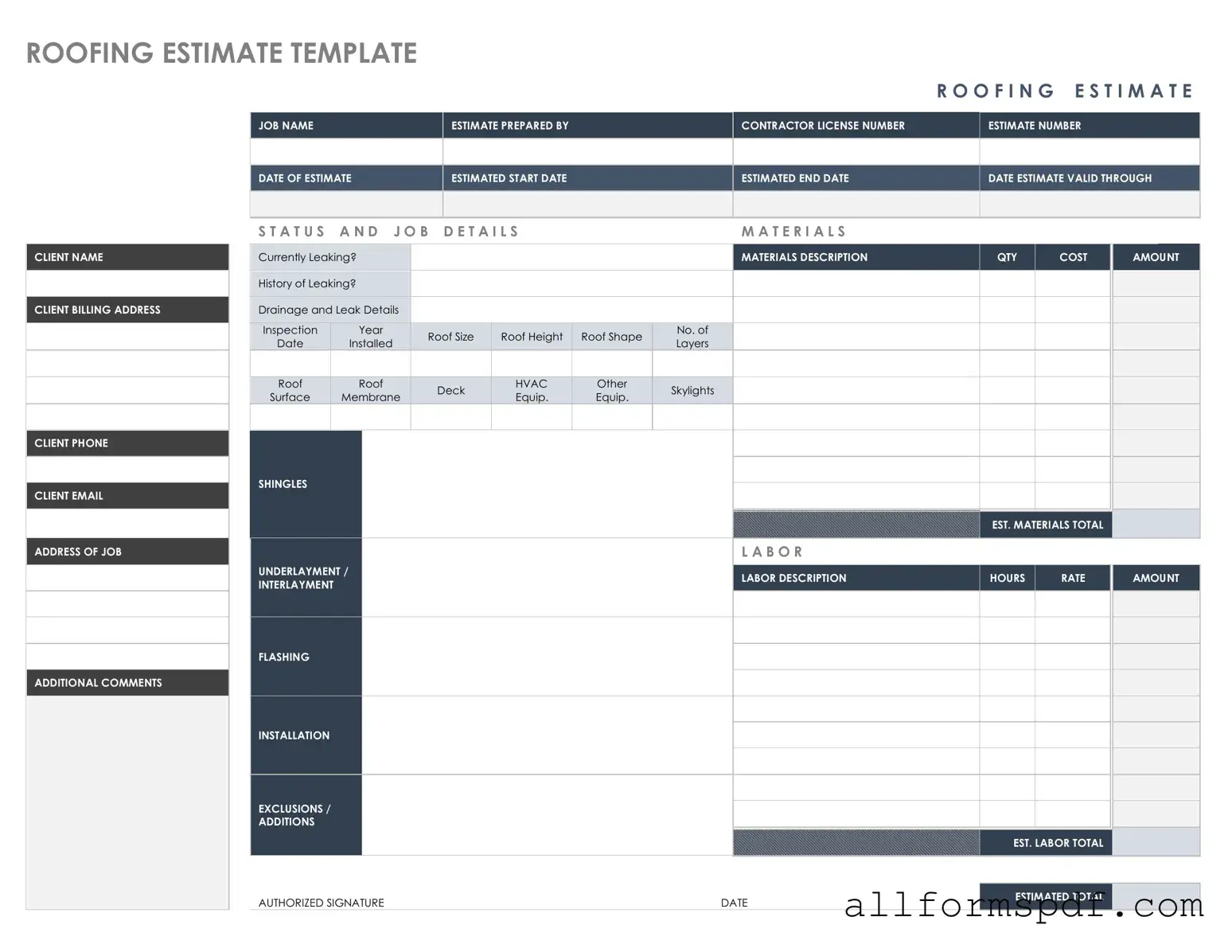When filling out a Roofing Estimate form, individuals often overlook crucial details that can lead to misunderstandings and delays. One common mistake is failing to provide accurate measurements of the roof. Whether it’s the total square footage or the pitch of the roof, precise information is essential for an accurate estimate. A miscalculation here can result in inflated costs or inadequate materials being ordered, ultimately affecting the quality of the roofing project.
Another frequent error involves neglecting to specify the type of roofing materials desired. Homeowners may assume that their preferences are understood, but without clear communication, contractors might suggest alternatives that do not meet the homeowner’s expectations. This can lead to dissatisfaction with the final product, as well as potential financial implications if changes need to be made later in the process.
Additionally, many individuals fail to disclose any existing issues with their roofs. Problems such as leaks, structural damage, or previous repairs should be noted in the estimate form. Omitting this information can lead to unexpected costs and complications during the roofing process. Contractors rely on complete transparency to provide the best possible service, and hidden issues can disrupt timelines and budgets.
Another mistake often seen is overlooking the inclusion of necessary permits or local regulations. Homeowners may not realize that certain roofing projects require permits or must adhere to specific building codes. By not addressing these requirements upfront, individuals risk facing fines or having to halt work until compliance is achieved, which can be both frustrating and costly.
Lastly, many people forget to provide their contact information clearly. Incomplete or incorrect contact details can hinder communication between the homeowner and the contractor. This lack of clarity may delay the project or lead to misunderstandings regarding timelines and expectations. Ensuring that contact information is accurate and easy to find can streamline the process and foster a more effective working relationship.
